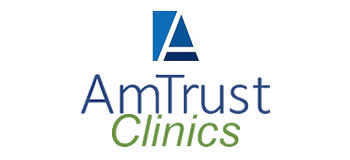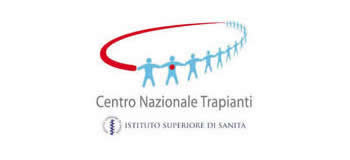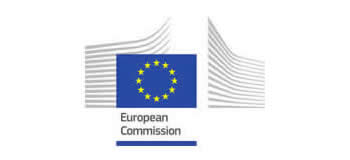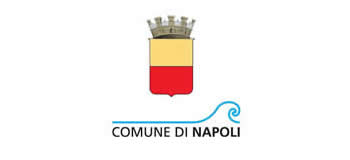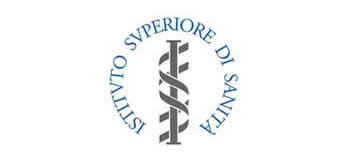Assisted Reproductive Technologies
Everyone deserves the opportunity
to become a parent.
Whatever the moment you are experiencing may be, we can help you!
Are you under
30
35 years old
Did you know that we have the highest clinical pregnancy rate in Italy per fresh transferred embryos in women under the age of 35.
Are you 35- 44
35-44
35 years old
A woman’s age has a strong impact on her fertility and on the quality and quantity of her oocytes; but at CFA we record success rate almost double the Italian average, for women 40 -44 years old
Have you already tried with
Assisted
Reproductive
Technologies
Don’t give up!
There are many couples who come to the CFA after numerous failed IVF cycles else where. This has allowed us to develop very high expertise that has led us to have the highest success rates in Italy
The name itself “Assisted Fertilization/ In vitro fertilization” reflects the deep meaning of this technique
What do we do when we undertake a path of ART here at the CFA?
Nothing more than “assist you” and accompany you towards achieving your dream; nothing more than helping your parent cells (sperm and oocytes) to meet, creating the optimal conditions for their development.
We offer personalised and comprehensive ART programs which are based on your specific needs and involve all aspects that could affect your chances of conception: from nutrition to psychology, from medicine to biology.
We will help you get pregnant and give birth to your desired child, using all the tools that science provides to help nature make your dream come true.
Our services
- Ovarian stimulation
- IU
- Intrauterine insemination
- IMSI
- FIVET
- ICAI
- AZH
- PICSI
- PGD
- Acupuncture
- Freezing Gametes and Embryos
- TESE
The name itself “Assisted Fertilization/ In vitro fertilization” reflects the deep meaning of this technique
What do we do when we undertake a path of ART here at the CFA?
Nothing more than “assist you” and accompany you towards achieving your dream; nothing more than helping your parent cells (sperm and oocytes) to meet, creating the optimal conditions for their development.
We offer personalised and comprehensive ART programs which are based on your specific needs and involve all aspects that could affect your chances of conception: from nutrition to psychology, from medicine to biology.
We will help you get pregnant and give birth to your desired child, using all the tools that science provides to help nature make your dream come true.
Our services
Are you thinking of embarking on an assisted reproduction journey? The first step is to book a consultation with our professionals. Every story is unique and therefore every single patient – as well as every couple – is invited to talk about their journey and their goals, in order to evaluate together what are the steps to take for a totally personalized assisted reproduction process.
With a simple blood sample we carry out hormonal analysis, i.e. the monitoring of your hormone levels in the blood. Through this examination we can identify hormonal imbalances, understand the cause and intervene with the right remedies.
Ovulation monitoring takes place through a series of transvaginal ultrasound scans and has a dual function:
✔on the one hand it’s used to check that ovulation happens
✔on the other hand it’s useful to increase the chances of conception with targeted intercourse
This examination is essential for all couples who decide to plan a pregnancy, but also for women who undergo ovulation induction therapies.
The spermogram is the first laboratory test a man should undergo when infertility is suspected in the couple. It is a diagnostic test to analyze seminal fluid to evaluate the quality, number, shape and motility of spermatozoa. A spermogram is useful not only for diagnosing the state of infertility, but also as an examination for the prevention of possible pathologies.
Correct nutrition can benefit fertility. A balanced diet and a healthy lifestyle help both women and men to take care of their fertility. It is no coincidence that the holistic approach to assisted reproduction, employed by CFA, also includes personalized advice by our nutritionist, whose advice accompanies the couples throughout their journey in search of a child.
Hysteroscopy is an endoscopic procedure that allows you to diagnose some pathologies of the uterine cavity. The examination takes place in the clinic and consists in observing the inside of the uterus through a hysteroscope, equipped with a camera, that allows to us identify malformations of the uterus or the presence of polyps, fibroids or tumours. Hysteroscopy is very useful for understanding the cause of infertility and is therefore usually recommended for women who want to embark in assisted fertilization.
Cryopreservation of semen is a procedure by which male gametes are collected and kept in a special container of liquid nitrogen for a short or long period of time, so that they can be thawed and used in assisted fertilization techniques in the future. Semen cryopreservation is of interest to patients undergoing oncological therapies that can compromise fertility over time, patients with pathologies that can lead to azoospermia or even patients who intend to preserve a future paternity, without risking the loss of testicular function due to unforeseen events that may occur in the course of life.
Embryo transfer, perhaps the most important moment in ART, is where the embryo is literally transferred from the laboratory to the woman’s uterus. Embryo transfer is a delicate procedure, but one that shouldn’t cause concern for the patient. The fear of failing ART and therefore seeing their dream fail, causes psychological stress and therefore we invite our patients to relax at CFA for about an hour after embryo transfer. It is not absolutely not necessary to stay in bed after transfer, but our advice is to resume daily activities, avoid excessive physical exertion, sources of stress and maintain a healthy diet.
In this simple technique, semen is collected by masturbation from the male and treated in the laboratory to collect the highest number of motile sperm free from the semen liquid. It is concentrated into a small volume and transferred via a plastic catheter into the womans uterine cavity. IUI is a simple technique with a very modest success rate of 7-8%
and can only be applied to couples with normal sperm samples, open fallopian tubes and good ovulation that often needs to be primed pharmaceutically.
During a menstrual cycle, the ovary normally produces only one mature oocyte for ovulation. In order to improve chances of a pregnancy, ART procedures require a protocol of ovarian stimulation, with naturally occurring hormones, generally FSH, to generate several mature oocytes. There are many general protocols for stimulation using different hormones, but in all cases the actual protocol depends on the age and physiology of the woman and the type of ART procedure to be used.
There are three types of pharmaceuticals used for ovarian stimulation:
1. Gonadotrphins
2. Agonists and antagonists of GnRH
3. Different triggers to induce ovulation such as hCG.
Ovarian stimulation with FSH is usually performed by daily sub-cutaneous injections of FSH lasting 9-12 days.
In this protocol exogenous FSH is not used to stimulate the ovaries, rather the natural intrinsic hormones of the patient are utilized. Natural cycles are often used in patients with a known poor response to FSH stimulation and such patients are often over 40 years of age. It is still important to follow the follicular growth with frequent ultrasound measurements and blood serum levels of oestrogen.
IVF was first used over 40 years ago and upto date has led to the birth of over 10 million babies worldwide. This technique is the core procedure for ART
and involves immersing the womans eggs in a drop of culture medium containing spermatozoa of the partner. The fertilized eggs are then left to develop
in culture for upto 5 days and then subsequently transferred
into the womans
uterus with a
fine soft plastic cannula.
Heterologous fertilization is a medically assisted procreation technique which is used in couples with impaired gamete function. In this technique one, or both, of the gametes are replaced by gametes from an external donor.
IMSI, intracytoplasmic injection of morphologically selected sperm, permits the selection of the best sperm, using a high-magnification microscope, without staining and in real time Numerous studies show that the ICSI technique associated with high magnification sperm selection allows for greater success and a higher pregnancy index, especially in cases where sperm alterations are associated with a high DNA fragmentation index.
The IMSI technique is offered where:
• ICSI has previously failed
• for severe teratozoospermia;
• there is high DNA fragmentation in the spermatozoa
• in idiopathic,
• or unexplained, infertility.
ICSI, used for the first time in 1992, is an assisted reproduction technique which in recent years has revolutionized the treatment of male infertility, giving men with few sperm cells the possibility of becoming a father.
With this technique, thanks to sophisticated equipment, the single sperm is injected directly into the oocyte.
ICSI is applied:
– as a result of repeated failures with IVF
– in case of endometriosis
– in the presence of severe male sterility and frozen semen and/or oocytes
In order to maximize the success rates, the woman is subjected to hormonal stimulation (induction of multiple ovulation) in order to recruit as many oocytes as possible.
AZH is a micro-surgical procedure performed on embryos to create a lesion in the zona pellucida, the eggs protective coat, to increase the chances of implantation and pregnancy. The embryo, after reaching the blastocyst stage, must hatch out of the envelope that surrounds it, called the “zona pellucida”, to then implant itself in the uterus and begin to receive oxygen and nutrients from the mother. AZH allows the zona pellucida of the embryo to be thinned using a laser before transfer to the uterus. In this way we favour the implantation of the embryo in to the uterine wall.
It is recommended:
– in women of advanced reproductive age (>38 years)
– when the levels of follicle stimulating hormone (FSH), on the third day, are particularly high
– in cases of repeated failures with in vitro fertilization techniques
– when, simply, a thickened zona pellucida is visible in the embryo.
Egg donation is the donation of eggs by a woman to another woman. This assisted fertilization technique takes place in complete anonymity, to respect the privacy of both the donor and the recipient. Choosing to donate your own oocytes is an act of great sensitivity, as it allows many couples to make their dreams come true. In fact, many women, due to pathologies, treatments such as chemotherapy or radiotherapy or age, have problems with their oocytes and today, fortunately, they can resort to egg donation. Eggs can be donated by healthy young women who are free from hereditary diseases. Egg donation is a gift, a gesture of solidarity, by which many women have conceived and given birth to their long wanted child.
Sperm donation is a voluntary act that allows men to donate their sperm so that it can be used in assisted reproduction techniques, helping many couples who are unable to have children. Sperm donation, like egg donation, takes place completely anonymously and not before the donor has undergone a series of genetic tests to avoid the risk of hereditary diseases. The sperm itself undergoes a period of quarantine in which it is ensured that there are no sexually transmitted diseases present.
The technique, called freeze all, has emerged as an alternative to fresh embryo transfer (ET) during in vitro fertilization (IVF) cycles. This procedure consists in the freezing and cryppreservation of all oocytes or embryos obtained from ART to transfer in a subsequent natural cycle.
We speak of Dual stimulation or DuoStim when during a single menstrual cycle two stimulations and two collections of oocytes are performed in the follicular and luteal phases. The DuoStim protocol is particularly effective in women in whom it is necessary to optimize the ovarian reserve, such as cancer patients or elderly patients.
TESE, testicular sperm extraction (or testicular biopsy) involves the extraction of small pieces of testicular tissue by a surgeon which is then immediately controlled in the laboratory for the presence of spermatozoa under the microscope. The tissue, after being classified as containing sperm, is then frozen for subsequent use in IVF. Thanks to this technique many azospermic men have been able to father children.
Egg donation and sperm donation are completely anonymous and volountary gestures from men and women to give couples, with gamete defects, the opportunity to procreate. Donors undergo a series of tests, which include hereditary diseases and sexually transmitted diseases before donating their gametes.
When choosing to embark in ART, both partners need psychological support. In fact, we must not underestimate the effect that stress can have, not only in the presence of any IVF failure, but also during the entire period of examinations and treatments to which one undergoes before the transfer. At CFA, our patients are supported by our pscychologists from the first consultation to the realization of their dream of parenthood.

